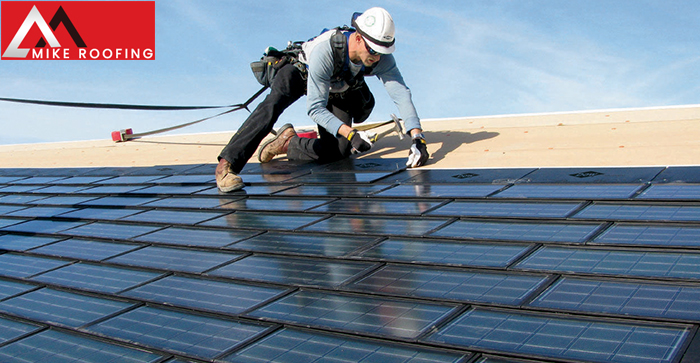Temple City residential roof replacement can vary based on the extent of the replacement required. Here are the different types

This involves removing the entire existing roof and replacing it with new materials. It is typically done when the roof is extensively damaged or has reached the end of its lifespan.
In this case, only a section of the roof is replaced. It may be necessary when specific areas of the roof have sustained damage, such as from a localized leak or storm
Also known as a re-roofing or roof recovery, this method involves installing new roofing material directly over the existing roof. It can be done if the existing roof is in relatively good condition and meets certain criteria.
This type of replacement involves replacing specific components of the roof, such as damaged or worn-out shingles, flashing, gutters, or underlayment. It targets the areas that require immediate attention while preserving the rest of the roof.
In some cases, the structural integrity of the roof may be compromised, requiring a more extensive replacement. This can involve repairing or replacing damaged roof trusses, beams, or other structural elements to ensure the stability and safety of the entire roof structure.
Here are the parts of the roof that might commonly need to be replaced during Temple City residential roof replacement
| Roof Part | Recommended Replacement Timeframe | Signs it’s Time to Replace |
|---|---|---|
| Shingles | 20-30 years | Curling, cracking, missing shingles, granule loss |
| Underlayment | 20-30 years | Water leaks, mold growth, excessive wear and tear |
| Flashing | 20-30 years | Rust, cracks, separation from roof |
| Gutters and Downspouts | 20-30 years | Rust, sagging, leaking, detached sections |
| Fascia and Soffit | 20-30 years | Rot, decay, water damage, pest infestation |
| Skylights | 20-25 years | Leaks, condensation, cracks, discoloration |
| Ventilation Systems | 15-25 years | Inadequate airflow, moisture buildup, increased energy costs |
| Chimney Cap and Crown | 15-30 years | Cracks, deterioration, water leaks |
| Roof Deck | 20-30 years | Sagging, rotting, visible damage |
You also get Temple City residential roof replacement during emergencies. Emergency roof replacement refers to the urgent and unplanned replacement of a residential roof due to severe damage or an immediate threat to the safety and integrity of the property. It is typically performed in response to sudden events such as a major storm, fire, or other catastrophic incidents that render the roof unsafe or non-functional.

The specific things included in an emergency roof replacement can vary depending on the extent of the damage and the requirements of the situation. However, some common components and steps involved in the process may include
A thorough inspection of the damaged roof is conducted to assess the extent of the problem and determine the necessary repairs or replacements.
Immediate temporary measures are taken to mitigate further damage and prevent any ongoing leaks or exposure to the elements. This may include covering damaged areas with tarps or temporary patches.
Safety precautions are implemented to protect both the roofing contractors and the occupants of the home during the replacement process. This may involve securing the area, setting up safety barriers, and ensuring proper equipment and gear are used.
Suitable roofing materials are selected based on factors such as the type of roof, local building codes, and the homeowner’s preferences. This can include choosing the appropriate shingles, underlayment, flashing, and other necessary components.
The existing damaged roof materials are removed carefully, ensuring proper disposal and minimizing any further disruption to the property.
Damaged or deteriorated components of the roof, such as shingles, underlayment, flashing, and decking, are replaced with new materials. It may also involve repairing or replacing damaged structural elements if required
A final inspection is conducted to ensure that the new roof meets all safety and quality standards. This may involve checking for proper installation, adherence to building codes, and addressing any remaining issues. Contact Mike Roofing for all assistance.
The duration of a residential roof replacement can vary depending on various factors such as the size of the roof, the complexity of the project, weather conditions, and the efficiency of the roofing crew. Typically, a complete roof replacement can take anywhere from a few days to a couple of weeks.
In many cases, homeowners insurance may cover roof replacement if the damage is a result of a covered peril, such as a storm, fire, or vandalism. However, coverage can vary depending on your policy and the specific circumstances. It’s advisable to review your insurance policy or consult with your insurance provider to understand what is covered and what deductibles or limitations may apply.
Yes, roof replacement presents an opportunity to select a different roofing material if desired. Different materials offer various benefits in terms of durability, aesthetics, energy efficiency, and cost. However, it’s important to consider factors such as local building codes, structural requirements, and compatibility with your home’s design. Consult with our team as they can help you make an informed decision.
To prepare for a roof replacement, you can start by removing any valuables or fragile items from your attic and walls, as vibrations during the construction process may cause them to fall. Additionally, ensure that the area around your home is clear of obstacles or vehicles to allow easy access for the roofing crew and equipment. It’s also advisable to discuss with us any specific preparations you need to take.